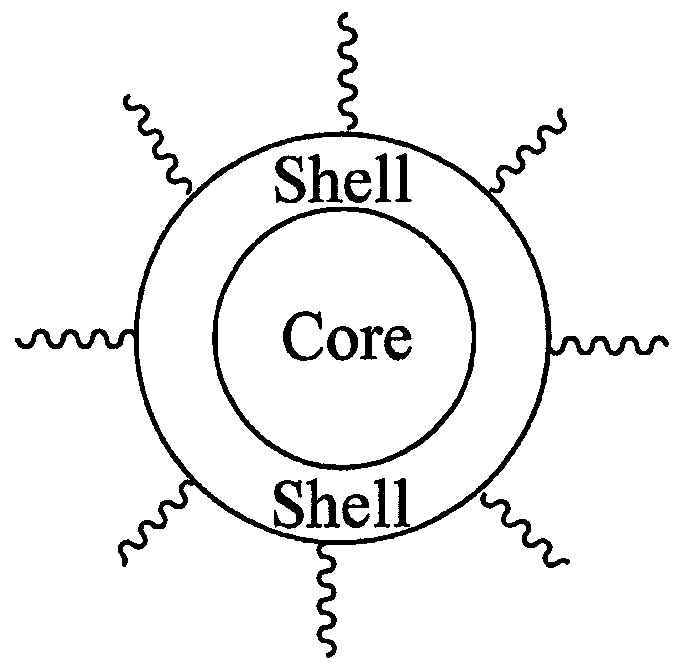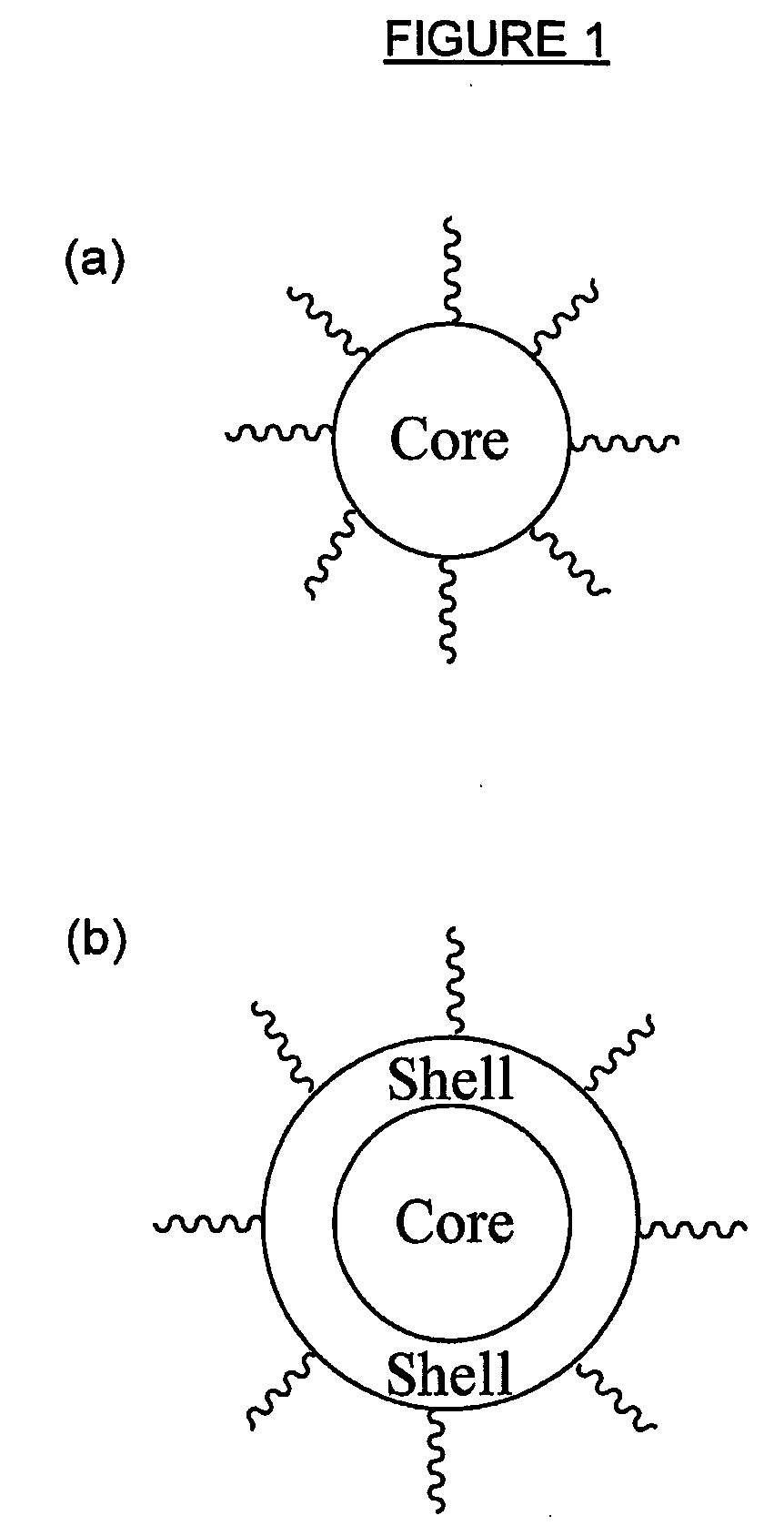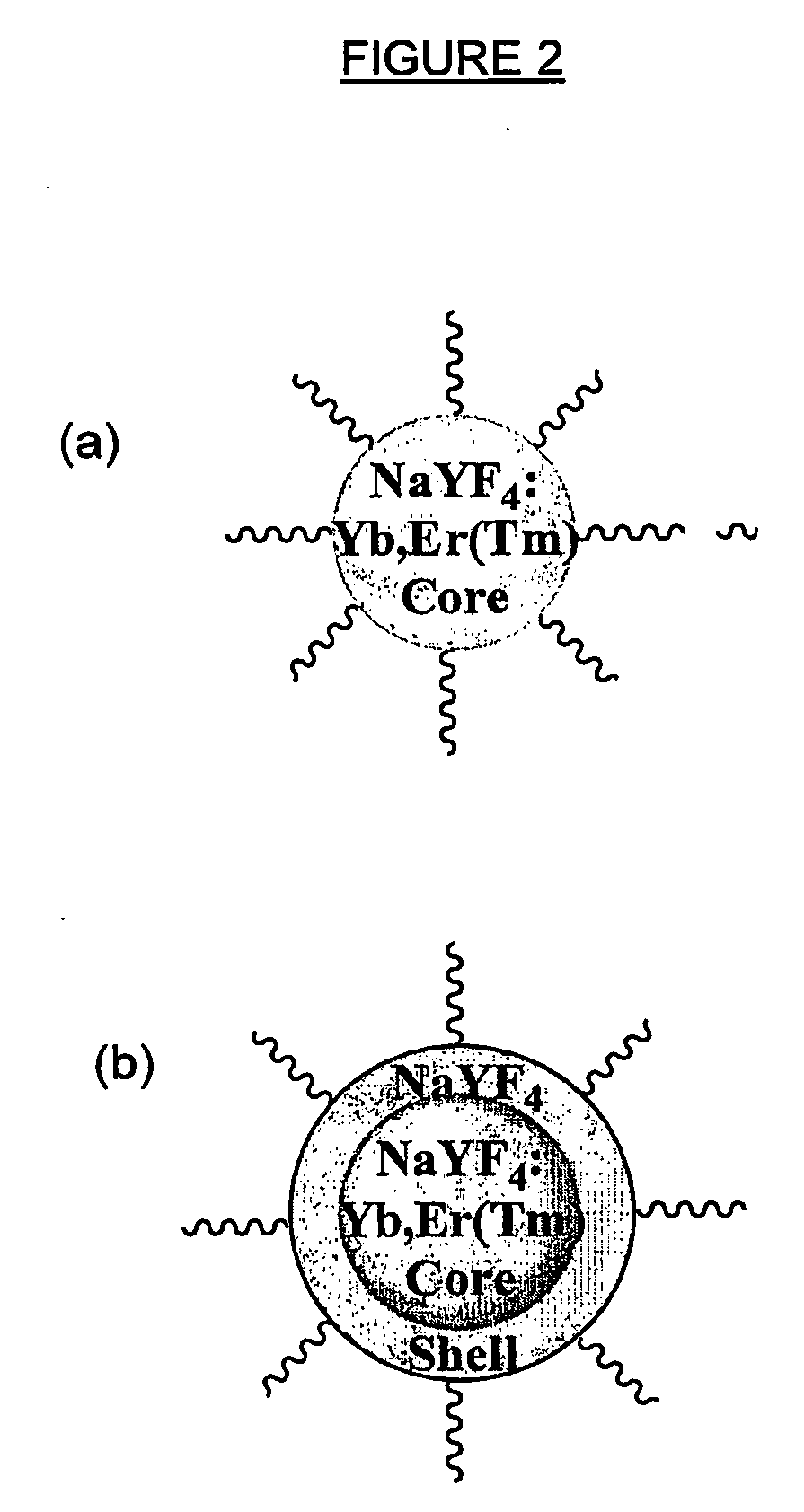Method of Preparing Nano-Structured Material(s) and Uses Thereof
a nano-structured material and nano-structure technology, applied in the field of nano-structured materials and a method of preparing nano-structured materials, can solve the problems of limiting sensitivity, reducing the signal-to-noise ratio, and autofluorescence (noise) of analytes under ultraviolet ligh
- Summary
- Abstract
- Description
- Claims
- Application Information
AI Technical Summary
Benefits of technology
Problems solved by technology
Method used
Image
Examples
example 1
Synthesis of Nanoparticles (Core or Core / Shell Structure)
example 1.1
Synthesis of Hexagonal Phase NaYF4:Yb,Er and NaYF4:Yb,Tm Nanoparticles
[0166]For the synthesis of hexagonal NaYF4:20% Yb,2% Er and NaYF4:20% Yb,2% Tm nanoparticles, a mixture of 2 mmol CF3COONa, 0.78 mmol of (CF3COO)3Y, 0.2 mmol of (CF3COO)3Yb and 0.02 mmol of (CF3COO)3Er / (CF3COO)3Tm was dissolved in 10 ml of oleylamine, and then passed through a 0.22 μm filter (Millipore) to remove any residue. Under vigorous stirring in a 50 ml flask, the mixture was heated to 330° C. in the presence of argon for protection from oxidation. After 1 h, heating was stopped. The transparent yellowish reaction mixture obtained was allowed to cool to 80° C. before 20 ml of ethanol was added to the mixture. The nanoparticles were isolated by centrifuging. They were washed 3 times with hexane and 3 times with de-ionized water to remove any NaF residue. The scheme of the reaction was as follows:
[0167]FIGS. 5a and 5b show TEM images of the NaYF4:20% Yb,2% Er nanoparticles. The well-dispersed particles sugges...
example 1.2
Synthesis of Cubic Phase NaYF4:Yb,Er and NaYF4:Yb,Tm Nanoparticles
[0170]For the synthesis of cubic NaYF4:20% Yb,2% Er and NaYF4:20% Yb,2% Tm nanoparticles, a mixture of 2 mmol CF3COONa, 0.78 mmol of (CF3COO)3Y, 0.2 mmol of (CF3COO)3Yb and 0.02 mmol of (CF3COO)3Er / (CF3COO)3Tm was dissolved in 10 ml of 1-octadecene, with 2 ml of oleic acid. The solution was passed through a 0.22 μm filter (Millipore) to remove any residue. Under vigorous stirring in a 50 ml flask, the mixture was heated to 300° C. in the presence of argon for protection from oxidation. After 1 h, heating was stopped. The transparent reaction mixture was allowed to cool to 80° C. before 20 ml of ethanol was added. The nanoparticles were isolated by centrifuging. They were washed 3 times with hexane and 3 times with de-ionized water to remove any NaF residue.
[0171]The average diameter of the nanoparticles obtained was 22 nm, with narrow size distribution, as shown in FIG. 7a. X-ray diffraction (XRD) results showed that ...
PUM
| Property | Measurement | Unit |
|---|---|---|
| size | aaaaa | aaaaa |
| optical wavelengths | aaaaa | aaaaa |
| size | aaaaa | aaaaa |
Abstract
Description
Claims
Application Information
 Login to View More
Login to View More - R&D
- Intellectual Property
- Life Sciences
- Materials
- Tech Scout
- Unparalleled Data Quality
- Higher Quality Content
- 60% Fewer Hallucinations
Browse by: Latest US Patents, China's latest patents, Technical Efficacy Thesaurus, Application Domain, Technology Topic, Popular Technical Reports.
© 2025 PatSnap. All rights reserved.Legal|Privacy policy|Modern Slavery Act Transparency Statement|Sitemap|About US| Contact US: help@patsnap.com



